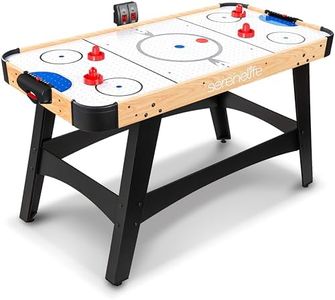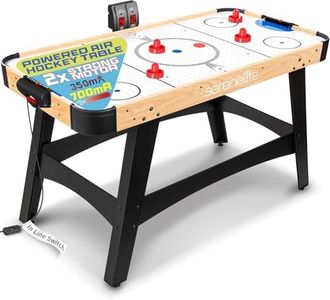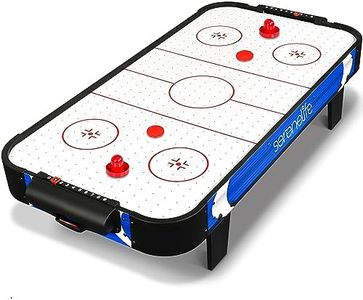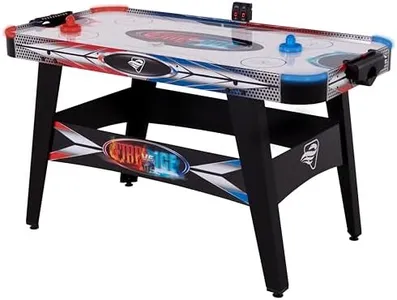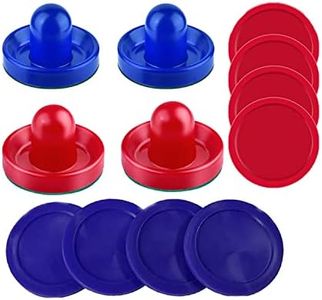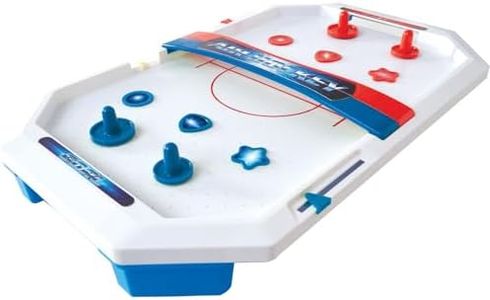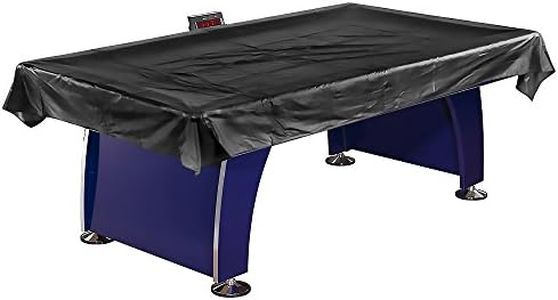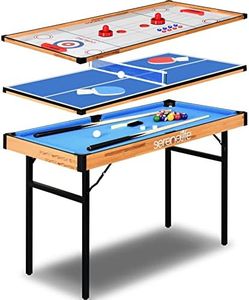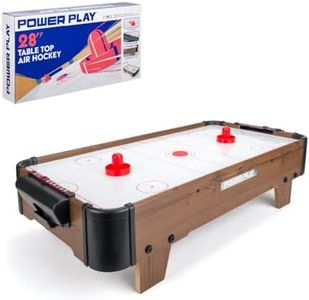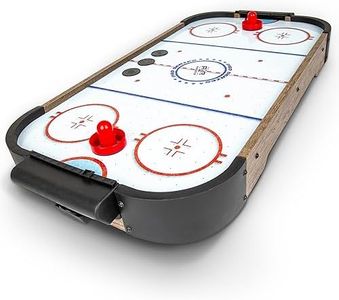We Use CookiesWe use cookies to enhance the security, performance,
functionality and for analytical and promotional activities. By continuing to browse this site you
are agreeing to our privacy policy
10 Best Air Hockey Table
From leading brands and best sellers available on the web.By clicking on a link to a third party's website, log data is shared with that third party.
Buying Guide for the Best Air Hockey Table
Choosing the right air hockey table can be the difference between occasional fun and hours of engaging, competitive play. To find the perfect fit for your space and needs, it's important to understand a few essential features that define the table's performance, durability, and user experience. By focusing on the key specs and aligning them with your intended usage—be it for family games, intense matches, or recreation room entertainment—you can ensure the table you select brings long-term enjoyment and suits your environment.Table SizeTable size refers to the length and width of the playing surface. This is important because it determines who can play (kids, adults, or both), how challenging and enjoyable the game will be, and if the table will fit comfortably in your available space. Standard home tables are usually between 4 and 7 feet long. Small tables (around 4 feet) are ideal for children or tight spaces, medium sizes (5-6 feet) offer a good balance for families, and full-size (7+ feet) tables provide an authentic, arcade-style experience suited for adult or competitive play. Choosing the right size depends on who will play most often and the room size you can dedicate.
Power of the Air BlowerThe air blower keeps the puck gliding smoothly over the surface by pushing air through small holes. A more powerful blower ensures consistent airflow and faster, more competitive play, while weaker blowers may lead to dead spots where the puck doesn't move well. For light use or younger children, lower-powered blowers might suffice, but if you want a true arcade feel or plan to play fast-paced games, opt for tables with stronger airflow. Make sure the blower matches both table size and desired play intensity; bigger tables generally need more powerful blowers.
Table Surface MaterialThe playing surface should be smooth and durable, as this affects puck movement and table longevity. Common materials include MDF (medium-density fiberboard), laminate, or sometimes more premium finishes. Higher-quality materials make the puck glide better and resist warping or sagging over time. For casual, occasional play, simpler surfaces work fine, while for frequent or competitive use, look for those with stronger construction or protective coatings to keep the table in top shape longer.
Leg and Frame ConstructionSturdy legs and a solid frame keep the table level and stable during play, preventing wobbling or tilting that can disrupt games. Tables with reinforced legs, metal support bars, or thicker materials are generally more stable and durable, better suited for households with energetic players or frequent use. Lightweight or foldable legs might work better for those needing portability or easy storage, but they may trade off some stability. Matching the construction style to your expected usage and space requirements will help you make a good choice.
Scoring SystemThis refers to how the table tracks points—either via a manual slider or an electronic scoreboard. Manual scoring is simple and durable, while electronic systems are more convenient as they automatically keep track, sometimes even with sound effects. For kids or casual groups, either option will work, but if you want a more immersive, competitive feel or easy tracking during fast games, electronic scoring can enhance the experience. Consider who will be playing and how much you value ease of use versus durability.

